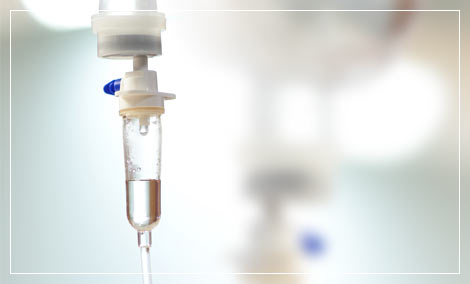
Intravenous Alpha Lipoic Acid
Written by. Dr. Adam McLeod, ND, BSc (Hons)
Alpha Lipoic Acid (ALA) is an antioxidant that has been used for decades to help with nerve related symptoms of diabetes. It can also be used to treat a long list of conditions including cancer. ALA is a unique antioxidant because due to its molecular structure, it can act as both a fat-soluble and water-soluble antioxidant. This unique property makes ALA a critical component of the antioxidant network. It seems that at high doses, it helps to prevent cell damage and it rapidly regenerates the supply of vitamin E and C.
ALA can either be taken orally or through intravenous therapy. The oral form is well absorbed if it contains the pure R form. The S form of alpha lipoic acid is poorly absorbed and it does not have the same positive effects. It is critical that the oral supplementation consists of the pure R form if you expect to get any positive benefits. When ALA is given intravenously, it is not necessary to differentiate between the R and S form because it is being infused directly into the blood stream. It is important to point out that ALA is very sensitive to light; therefore, the IV bag and the line must be protected from ultraviolet (UV) rays. There are some special bags and lines that are opague which have UV filters. Most clinics simply wrap the line and the bag in tin foil to preserve the ALA while it is being infused.
The intravenous route allows much higher doses of ALA to be administered, and it is these higher doses that are linked to an anti-cancer effect. It appears that ALA triggers mitochondrial respiration and induces apoptosis in cancerous cells29. There are a number of reported cases of long-term disease stabilization with ALA and low dose naltrexone in patients with metastatic pancreatic cancer30,31. The exact mechanism for this effect is not known, but in addition to increasing mitochondrial reactive oxygen species, it has also been documented as a p53 activator in cancerous cells32. p53 is a tumour suppressor that is commonly inactivated in cancerous cells. By activating this molecule, it triggers programmed cell death in these abnormal cells. At higher doses ALA will compete with B-vitamins (particularly biotin) and this can cause a deficiency if patients are not adequately supported.
Chemotherapy can be hard on the nervous system, and it is not uncommon for patients to develop neuropathy. This can manifest as a sensation of tingling, burning or pain in the hands and feet. Once this neuropathy develops during chemotherapy, it is often irreversible. Recent research indicates that ALA can improve the function and conduction of neurons. This property makes ALA an ideal candidate for nerve support during chemotherapy28. In patients who have neuropathy prior to starting chemotherapy, it is very important to be proactive with nerve supports. IV ALA can help to support the nerves and reduce the risk of neuropathy developing or progressing during chemotherapy. Due to the fact that ALA is an antioxidant, it is not safe with all chemotherapy protocols. However, there are some chemotherapy regimens where its use is very safe and effective.
There are a couple of important details that must be considered when giving patients intravenous alpha lipoic acid. The ALA will potentiate insulin so you must be cautious when administering this to diabetic patients. Although it is not a contraindication to diabetes, you must carefully monitor their blood sugar before you start any infusion. It cannot be mixed with other compounds or it will form precipitates in the bag. It should be administered in a separate bag and the line should be flushed if another solution was given beforehand. For optimal absorption (and safety), it is critical that the ALA be put in a non-ionic solution such as D5W.
Dr. Adam McLeod is a Naturopathic Doctor (ND), BSc. (Hon) Molecular biology, First Nations Healer, Motivational Speaker and International Best Selling Author. He currently practices at his clinic in Vancouver, British Columbia where he focuses on integrative cancer care. https://www.yaletownnaturopathic.com
References:
Gedlicka, C., et al. “Effective treatment of oxaliplatin-induced cumulative polyneuropathy with alpha-lipoic acid.” Journal of clinical oncology 20.15 (2002): 3359-3361.
Wenzel, U., A. Nickel, and H. Daniel. “α-lipoic acid induces apoptosis in human colon cancer cells by increasing mitochondrial respiration with a concomitant O2−.-generation.” Apoptosis 10.2 (2005): 359-368.
Berkson, Burton M., Daniel M. Rubin, and Arthur J. Berkson. “The long-term survival of a patient with pancreatic cancer with metastases to the liver after treatment with the intravenous α-lipoic acid/low-dose naltrexone protocol.” Integrative cancer therapies 5.1 (2006): 83-89.
Berkson, Burton M., Daniel M. Rubin, and Arthur J. Berkson. “Revisiting the ALA/N (α-Lipoic Acid/Low-Dose Naltrexone) protocol for people with metastatic and nonmetastatic pancreatic cancer: a report of 3 new cases.” Integrative cancer therapies 8.4 (2009): 416-422.
Simbula, G., et al. “Increased ROS generation and p53 activation in α-lipoic acid-induced apoptosis of hepatoma cells.” Apoptosis 12.1 (2007): 113-123.






Leave a Reply
You must be logged in to post a comment.